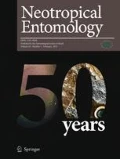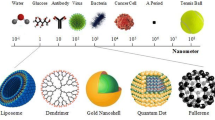Abstract
The present study focused on preparing a nano-ointment base integrated with biogenic gold nanoparticles from Artemisia vulgaris L. leaf extract. As prepared, nano-ointment was characterized by using Fourier-transform infrared spectroscopy, and the morphology of the nano-ointment was confirmed through a scanning electron microscope. Initially, the 3-(4,5-dimethylthiazol-2-yl)-2,5-diphenyltetrazolium bromide results showed nano-ointment cytocompatibility at different concentrations (20–200 μg/mL) against L929 cells. The in vitro hemolysis assay also revealed that the nano-ointment is biocompatible. Further studies confirmed that nano-ointment has repellent activity with various concentrations (12.5, 25, 50, 75, and 100 ppm). At 100 ppm concentration, the highest repellent activity was observed at 60-min protection time against the Aedes aegypti L. female mosquitoes. The results indicated that the increasing concentration of nano-ointment prolongs the protection time. Moreover, the outcome of this study provides an alternative nano-ointment to synthetic repellent and insecticides after successful clinical trials. It could be an eco-friendly, safer nano-bio repellent, which can protect from dengue fever mosquitoes.





Similar content being viewed by others
References
Ahmad A, Syed F, Shah A, Khan Z, Tahir K, Khan AU, Yuan Q (2015) Silver and gold nanoparticles from Sargentodoxa cuneata: synthesis, characterization and antileishmanial activity. RSC Adv 5(90):73793–73806
Allen L, Ansel HC (2013) Ansel’s pharmaceutical dosage forms and drug delivery systems. Lippincott Williams & Wilkins
Amer A, Mehlhorn H (2006) Larvicidal effects of various essential oils against Aedes Anopheles and Culex larvae (Diptera, Culicidae). Para Res 99(4):466–472
Babu PJ, Das RK, Kumar A, Bora U (2011) Microwave-mediated synthesis of gold nanoparticles using coconut water. Inter J Gr Nanotech 3(1):13–21
Babu PJ, Sharma P, Saranya S, Bora U (2013) Synthesis of gold nanoparticles using ethonolic leaf extract of Bacopa monnieri and UV irradiation. Mat Let 93:431–434
Benner JP (1993) Pesticidal compounds from higher plants. Pest Sci 39(2):95–102
Caballero-Gallardo K, Olivero-Verbel J, Stashenko EE (2012) Repellency and toxicity of essential oils from Cymbopogon martinii, Cymbopogon flexuosus and Lippia origanoides cultivated in Colombia against Tribolium castaneum. J St pro REs 50:62–65
Crooks RM, Lemon BI, Sun L, Yeung L K, Zhao M (2001). Dendrimer-encapsulated metals and semiconductors: synthesis, characterization, and applications. In Dendrimers III (pp. 81–135). Springer Berlin Heidelberg.
Divya G, Panonnummal R, Gupta S, Jayakumar R, Sabitha M (2016) Acitretin and aloe-emodin loaded chitin nanogel for the treatment of psoriasis. Eu J Pharm Biopharm 107:97–109
Dua VK, Alam MF, Pandey AC, Rai S, Kaul CAK, VK, Dash AP, (2008) Insecticidal activity of Valeriana jatamansi (Valerianaceae) against mosquitoes. J a Mos Con Asso 24(2):315–318
Elechiguerra JL, Burt JL, Morones JR, Camacho-Bragado A, Gao X, Lara HH, Yacaman MJ (2005) Interaction of silver nanoparticles with HIV-1. J Nano Biotech 3(1):6
Govindarajan M, Rajeswary M, Muthukumaran U, Hoti SL, Khater HF, Benelli G (2016a) Single-step biosynthesis and characterization of silver nanoparticles using Zornia diphylla leaves: a potent eco-friendly tool against malaria and arbovirus vectors. J Photochem Photobio b: Bio 161:482–489
Govindarajan M, Khater HF, Panneerselvam C, Benelli G (2016b) One-pot fabrication of silver nanocrystals using Nicandra physalodes: a novel route for mosquito vector control with moderate toxicity on non-target water bugs. Vet Sci Res J 107:95–101
Gu HJ, Cheng SS, Huang CG, Chen WJ, Chang ST (2009) Mosquito larvcidal activities of extractives from black heartwood-type Cryptomeria japonica. Para Res 105(5):1455–1458
Hwang YS, Wu KH, Kumamoto J, Axelrod H, Mulla MS (1985) Isolation and identification of mosquito repellents in Artemisia vulgaris. J Chem Ecol 11(9):1297–1306
Jayakumar R, Nair A, Rejinold NS, Maya S, Nair SV (2012) Doxorubicin-loaded pH-responsive chitin nanogels for drug delivery to cancer cells. Carbo Poly 87(3):2352–2356
Kapoor LD (2000) In: CRC Handbook of ayurvedic medicinal plants. CRC Press, Boca Raton, Florida, p 53
Kaushik R, Mann AS, Sandhu BS, Parihar VBS (2012) Green synthesis of gold nanoparticles using Toona ciliata methanol bark extract and their characterization. Int Res J Pharm 3(9):115–119
Kettel MJ, Dierkes F, Schaefer K, Moeller M, Pich A (2011) Aqueous Nanogels Modified with Cyclodextrin Poly 52(9):1917–1924
Khandelia R, Jaiswal A, Ghosh SS, Chattopadhyay A (2013) Gold nanoparticle–protein agglomerates as versatile nanocarriers for drug delivery. Small 9(20):3494–3505
Khater HF (2017). Introductory chapter: back to the future-solutions for parasitic problems as old as the pyramids. Natural Remedies in the Fight against Parasites, 5–7.
Khater HF, Selim AM, Abouelella GA, Abouelella NA, Murugan K., Vaz NP, Govindarajan M (2019). Commercial mosquito repellents and their safety concerns. In Malaria. Intech Open. DOI: http://dx.doi.org/https://doi.org/10.5772/intechopen.87436.
Khlebtsov N, Dykman L (2011) Biodistribution and toxicity of engineered gold nanoparticles: a review. Chem Soc Rev 40(3):1647–1671
Krishnaraj C, Muthukumaran P, Ramachandran R, Balakumaran MD, Kalaichelvan PT (2014) Acalypha indica Linn: biogenic synthesis of silver and gold nanoparticles and their cytotoxic effects against MDA-MB-231, human breast cancer cells. Biotech Rep 4:42–49
Kumar KP, Paul W, Sharma CP (2011) Green synthesis of gold nanoparticles with Zingiber officinale extract: characterization and blood compatibility. Pro Biochem 46(10):2007–2013
Lambert JDH, Campbell G, Arnason JT, Majak W (1991) Herbicidal properties of alpha-terthienyl, a naturally occurring phototoxin. Can J Pl Sci 71(1):215–218
Magro M, Bramuzzo S, Baratella D, Ugolotti J, Zoppellaro G, Chemello G, Olivotto I, Ballarin C, Radaelli G, Arcaro B, De Liguoro M (2019) Self-assembly of chlorin-e6 on γ-Fe2O3 nanoparticles: application for larvicidal activity against Aedes aegypti. J Photochem Photobiol 194:21–31. https://doi.org/10.1016/j.jphotobiol.2019.03.004
Mangalathillam S, Rejinold NS, Nair A, Lakshmanan VK, Nair SV, Jayakumar R (2012) Curcumin loaded chitin nanogels for skin cancer treatment via the transdermal route. Nanosc 4(1):239–250
Mateo D, Morales P, Ávalos A, Haza AI (2015) Comparative cytotoxicity evaluation of different size gold nanoparticles in human dermal fibroblasts. J Exp Nanosci 10(18):1401–1417
MubarakAli D, Thajuddin N, Jeganathan K, Gunasekaran M (2011) Plant extract mediated synthesis of silver and gold nanoparticles and its antibacterial activity against clinically isolated pathogens. Coll Surf b Biointer 85(2):360–365
Murugan K, Priyanka V, Dinesh D, Madhiyazhagan P, Panneerselvam C, Subramaniam J, Alarfaj AA (2015) Predation by Asian bullfrog tadpoles, Hoplobatrachus tigerinus, against the dengue vector, Aedes aegypti, in an aquatic environment treated with mosquitocidal nanoparticles. Parasitol Res 114(10):3601–3610
Narayanan KB, Sakthivel N (2010) Biological synthesis of metal nanoparticles by microbes. Advan in Coll Inter Sci 156(1):1–13
Nentwig G (2003) Use of repellents as prophylactic agents. Parasitol Res 90:S40–S48
Nerio LS, Olivero-Verbel J, Stashenko EE (2009) Repellent activity of essential oils from seven aromatic plants grown in Colombia against Sitophilus zeamais motschulsky (Coleoptera). J St pro REs 45(3):212–214
Panneerselvam C, Murugan K, Kovendan K, Kumar PM (2012) Mosquito larvicidal, pupicidal, adulticidal, and repellent activity of Artemisia nilagirica (Family: Compositae) against Anopheles stephensi and Aedes aegypti. Para Res 111(6):2241–2251
Phasomkusolsil S, Soonwera M (2011). Comparative mosquito repellency of essential oils against Aedes aegypti (Linn.), Anopheles dirus (Peyton and Harrison) and Culex quinquefasciatus (Say). A. Pac. J. Trop. Biomed. 1(1), 113–118.
Ram PR, Mehrotra MN (1995) Compendium of Indian medicinal plants. Publication and Information Directorate, CSIR, New Delhi 4(1985–1989):74
Roni M, Murugan K, Panneerselvam C, Subramaniam J, Nicoletti M, Madhiyazhagan P, Canale A (2015) Characterization and biotoxicity of Hypnea musciformis-synthesized silver nanoparticles as potential eco-friendly control tool against Aedes aegypti and Plutella xylostella. Ecotoxicol Environ Saf 121:31–38
Sathishkumar G, Jha PK, Vignesh V, Rajkuberan C, Jeyaraj M, Selvakumar M, Sivaramakrishnan S (2016) Cannonball fruit (Couroupita guianensis, Aubl.) extract mediated synthesis of gold nanoparticles and evaluation of its antioxidant activity. Journal of Mol Liquids 215:229–236
Seddiek SA, Ali MM, Khater HF, El-Shorbagy MM (2011) Anthelmintic activity of the white wormwood, Artemisia herba-alba against Heterakis gallinarum infecting turkey poults. J Med Plants Res 5(16):3946–3957
Singh NP, Chowdhery HJ (2002) Biodiversity conservation in India. In: Das AP (ed) Perspective of plant biodiversity. North Bengal University, West Bengal, India, Department of Botany, pp 501–527
Soonwera M (2015). Larvicidal and oviposition deterrent activities of essential oils against house fly (Musca domestica L.; Diptera: Muscidae). J. Agri. Tech. 11(3), 657–667.
Sundararajan B, RanjithaKumari BD (2017) Novel synthesis of gold nanoparticles using Artemisia vulgaris L. leaf extract and their efficacy of larvicidal activity against dengue fever vector Aedes aegypti L. T El Med Bio 43:187–196
Tomuleasa C, Soritau O, Orza A, Dudea M, Petrushev B, Mosteanu O, Kacso G (2012). Gold nanoparticles conjugated with cisplatin/doxorubicin/capecitabine lower the chemoresistance of hepatocellular carcinoma-derived cancer cells. J. Gastro. Liv Dis. 21(2).
Trongtokit Y, Rongsriyam Y, Komalamisra N, Apiwathnasorn C (2005) Comparative repellency of 38 essential oils against mosquito bites. Phy Res 19(4):303–309
Uboldi C, Bonacchi D, Lorenzi G, Hermanns MI, Pohl C, Baldi G, Kirkpatrick CJ (2009) Gold nanoparticles induce cytotoxicity in the alveolar type-II cell lines A549 and NCIH441. Part Fib Tox 6(1):18
Wang J, Zhu F, Zhou XM, Niu CY, Lei CL (2006) Repellent and fumigant activity of essential oil from Artemisia vulgaris to Tribolium castaneum (Herbst) (Coleoptera: Tenebrionidae). J Stored Prod Res 42(3):339–347
World Health Organization, Special Programme for Research, Training in Tropical Diseases, World Health Organization. Department of Control of Neglected Tropical Diseases, World Health Organization. Epidemic, & Pandemic Alert., 2009. Dengue: guidelines for diagnosis, treatment, prevention and control. WHO.
Zhu J, Zeng X, Liu T, Qian K, Han Y, Xue S, Zhang A (2006) Adult repellency and larvicidal activity of five plant essential oils against mosquitoes. J a Mos Con Asso 22(3):515–522
Author information
Authors and Affiliations
Contributions
B.S. and B.D.R.K. conceived of the idea of the work. B.S. developed the study, performed the wrote the main manuscript. B.S., G.S., P.S., and S.S. carried out the experiments. A.K.M., S.M., A.T., and E.J. analyzed data interpretation. A.A.S.B.M., V.D.S., and Z.Z. revised the manuscript contents. All authors discussed the results and contributed to the final manuscript.
Corresponding authors
Ethics declarations
Conflict of Interest
The authors declare no competing interests.
Additional information
Edited by Rodrigo Gurgel Gonçalves
Publisher's Note
Springer Nature remains neutral with regard to jurisdictional claims in published maps and institutional affiliations.
Rights and permissions
About this article
Cite this article
Sundararajan, B., Sathishkumar, G., Seetharaman, P.k. et al. Biosynthesized Gold Nanoparticles Integrated Ointment Base for Repellent Activity Against Aedes aegypti L. Neotrop Entomol 51, 151–159 (2022). https://doi.org/10.1007/s13744-021-00920-z
Received:
Accepted:
Published:
Issue Date:
DOI: https://doi.org/10.1007/s13744-021-00920-z




